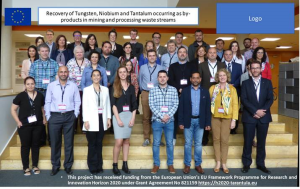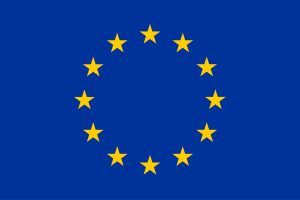the Tantalum-Niobium International Study Center (T.I.C.) : Tarantula project
An international, non-profit association founded in 1974 under Belgian law.
- Metals: Niobium (Nb), Tantalum (Ta)
- Read 930 Times
- Metals: Niobium (Nb), Tantalum (Ta)
- Industries : ALL
Tarantula project
 The T.I.C. is part of a consortium of 16 organisations to be awarded funding to study innovative new ways to recover niobium (Nb), tantalum (Ta) and tungsten (W) from mine by-products and processing waste streams, materials which are currently considered to be uneconomical. In June 2019 Tarantula held its first meeting and the project started.
The T.I.C. is part of a consortium of 16 organisations to be awarded funding to study innovative new ways to recover niobium (Nb), tantalum (Ta) and tungsten (W) from mine by-products and processing waste streams, materials which are currently considered to be uneconomical. In June 2019 Tarantula held its first meeting and the project started.
What is Tarantula?
Tarantula is not just the name for a family of large hairy spiders, it is also the name of a new European Union (EU) project to explore ways to recover critical raw materials from previously uneconomical materials generated during the actions of mining and ore processing. The extraordinary properties of refractory metals, the unlikeliness of their future substitution and their use in booming industries will sustain a high EU demand for niobium, tantalum and tungsten. Despite all three being classified as ‘critical raw materials’ (CRM) by the European Commission (EC) in 20171, fractions of these indispensable metals are dissipated as by-products in mining waste streams as well as processing waste.
Who is participating?
The T.I.C. is joined by fifteen other organisations from a range of industrial and academic backgrounds, together forming a team with considerable resources. The program is coordinated by Tecnalia, an applied research and technological development centre based in Spain, and a full list of consortium members can be found at the Tarantula website https://h2020-tarantula.eu/.

What is the goal of Tarantula?
The key purpose of Tarantula is to stimulate recovery of niobium, tantalum and tungsten from these complex, low-grade resources, and to develop a suite of cost-effective, scalable and eco-friendly (bio-, hydro-, iono-, solvo-, pyro- and electro-metallurgical) processes with high selectivity and recovery rates.
These novel technologies, each representing an alternative for one or more process steps of state-of-the-art processing lines, will form new routes towards market-ready metals, metal oxides and metal carbides. Flexibility will be the cornerstone of the overall process flowsheet to enable recovery of all three elements (W, Nb, Ta), thereby minimising the capital expenditure required for future processing installations.
T.I.C.’s role in Tarantula
The T.I.C. is a junior partner in the consortium, but plays an important role in two key areas:
- Work package (WP) 2: Identification of European resources of refractory metals. There are over 3600 occurrences of W, Nb and Ta recorded in Europe. Each record will need to be checked, standardised and incorporated into the Tarantula database.
- WP8: Communication and dissemination of results to stakeholders. This will include developing training materials and coordinating workshops that target industrial audiences, such as T.I.C. member companies.
Future editions of the Bulletin will contain more information as the project develops.
Looking ahead

Following systematic research and innovation activities at lab scale, the envisioned technologies will be brought to technology readiness level 3 to 52 and, based on performance, validated at prototype level by experienced industrial partners. In parallel, future by-product recovery will be supported by carrying out a comprehensive identification and assessment of existing un/underexploited secondary sources of W, Nb and Ta.
The generated information – in compliance with all pertinent laws and regulations – will feed into the Raw Materials Information System (RMIS) which will boost the impact of the project far beyond the current consortium.
Finally, Tarantula will create tailored communication, dissemination and civil society engagement strategies with respect to obtaining and maintaining the “Social License to Operate” for future heavy-duty metallurgical processing.
- Read 930 Times
- Metals: Niobium (Nb), Tantalum (Ta)
- Industries : ALL
- Author: Tantalum-Niobium International Study Center (T.I.C.)
- Published Date: 11/03/2025
- The T.I.C. was established in response to concerns within the tantalum industry regarding the lack of useful information on tantalum source materials. The initial purpose of the T.I.C. was to spread information about tantalum and to promote the common interest and welfare of the producers, especially with public and private authorities, organisations and agencies. Since its foundation, the T.I.C. has grown to encompass niobium and all stages of the tantalum/niobium supply chains.
Advancing sustainability, technology, and industry collaboration since 1974.
Driving Global Innovation in Tantalum and Niobium
Connecting global innovators in tantalum and niobium, driving advancements from raw materials to cutting-edge applications.
- Supporting over 90 members across 30 countries.
- Promoting cutting-edge research and development.
- Facilitating a global network of professionals.
